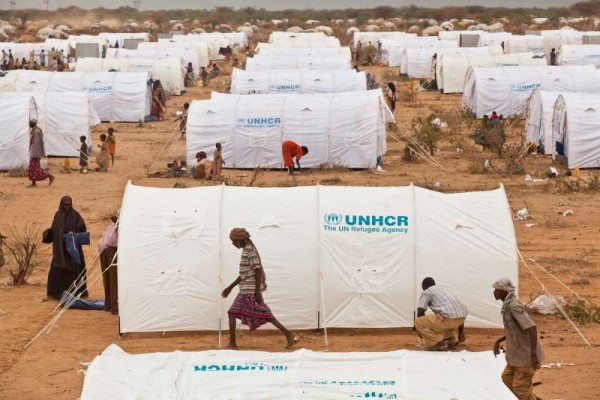
This year has been a difficult one for many countries in Europe in terms of human migration. Many people, majority of them from the Middle East, fleeing violence have trooped to Europe.
Even before this migration crisis in Europe, most of the world’s refugees in fact were and are living in camps in sub-Saharan Africa and the Middle East. In Sub-Sahara Africa, many Somali refugees fleeing violence in their country live in Kenya. The Dadaab area in Kenya has now turned into a semi-arid town, hosting more than 350,000 refugees in five camps.

In the Middle East, Syrian refugees have been living in Turkey, Jordan, and Lebanon since the start of the war. It is said one in five people living in Lebanon is now a Syrian refugee. And According to experts who have visited these camps, these unfortunate people are left to their fate. They cannot work or engage in any productive ventures due to the host country’s laws. In the end, many of these displaced people become weary and frustrated. Crime, alcoholism and drugs often characterize camp life. Maybe this explains why they have been trooping to Europe. At least, they can get some menial jobs to survive on.
Apart from these places that we have mentioned, there are equally a number of refugee camps in other places where their temporal stay has span into two or three decades. It is not even clear whether they will be going back to their country of origin again.
And in order to find a concrete solution to solving some of the problems in refugee camps, the researcher, Marlen de la Chaux argues that fostering entrepreneurial initiatives in camps could combat the negative consequences that result from the idleness of refugees.
“My academic research focuses on the dynamics and opportunities of refugee camps, and I believe that policymakers should foster entrepreneurship in refugee camps in order to help turn this cycle of despair into hope and dignity. Such initiatives could be life-enhancing for millions of people displaced by war, persecution and other man-made events”, Marlen writes on the Conversation.

However, according to Marlen, there is an institutional paralysis that thwarts entrepreneurial initiatives in refugee camps, posing barriers that need to be tackled by governments, NGOs, and anybody interested in complete welfare of displaced people.
Marlen states that while there are cafes, barbershops and repair services in refugee camps, such jobs remain a grey area because it contradicts the supposed transience underlying the camp concept, creating obstacles to the broader entrepreneurship needed in such camps. It means there is a lack of functioning supply that would otherwise evolve in demand-driven markets. Also, there are inefficient legal and political systems regulating entrepreneurial activity and there is insufficient infrastructure which connects entrepreneurs to information, financial capital and customers.
Marlen therefore suggests how we can deal with these obstacles “Research I conducted into this issue leads us to propose a few solutions. For a start, cash-based aid programs and partnerships with micro-lending institutions, as cautiously piloted in a handful of camps, would help refugees launch businesses. There should also be clearer policies on how refugee-camp entrepreneurs engage with host communities in order to reduce uncertainty for both parties”.

The researcher further suggests that host countries could also outsource some tasks to refugees in order to create employment opportunities within camps. She also calls for urban-planning strategies in camps to improve infrastructure in order to link entrepreneurs, resources, and customers. This according to her will create a role for business incubation, and an acceleration of spaces in refugee camps as an avenue for knowledge exchange, and a safe place to pilot entrepreneurial ideas.
Finally, Marlen concludes that refugees should be given the opportunity to decide how they want their camps to look like. Although elected refugee delegates represent the camp population, decisions of how the camp should be run are made in offices far away. It is only when they are involved in decisions making that they will realize they also have a critical role to play to bring the development we are looking for.
You want to support Anonymous Independent & Investigative News? Please, follow us on Twitter: Follow @AnonymousNewsHQ
This Article (How We Can Transform Idle Refugee Camps Into A Productive Venture To Prevent Further Crisis) is free and open source. You have permission to republish this article under a Creative Commons license with attribution to the author and AnonHQ.com




